Slime Moulds in Windthrown Root Hollow
RSPB Strumpshaw Fen Woodland – October 2024
In early October in the same windthrown root hollow where we found Stemonitopsis typhina we saw gregarious groups of what may have been a Trichia species. In the photo below, on the right, there are white young sporangia and on the left maturing honey-yellow sporangia.
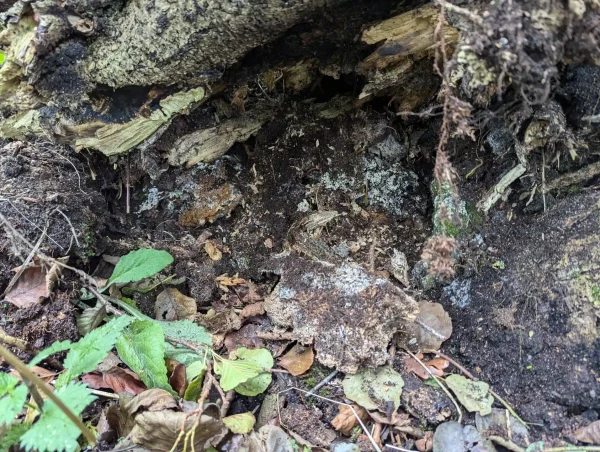
Strumpshaw Fen woodland – 6th October 2024
White sporangia on the right.
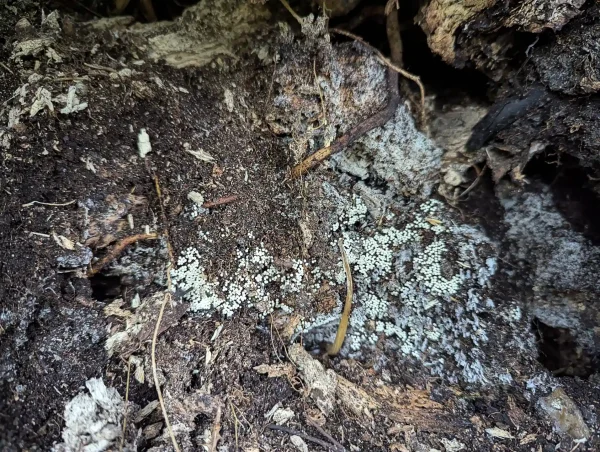
Strumpshaw Fen woodland – 6th October 2024
Honey-yellow sporangia on the left.
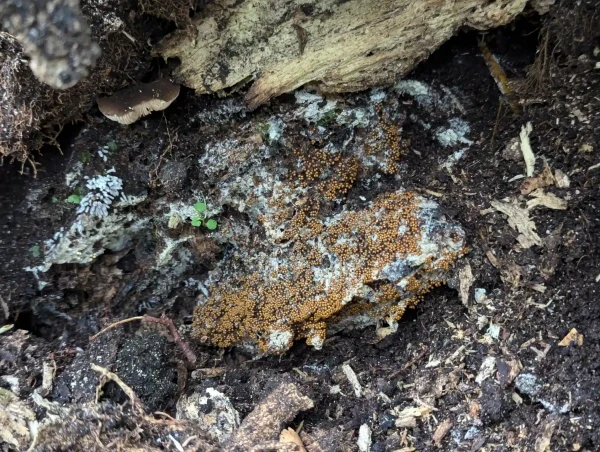
Strumpshaw Fen woodland – 6th October 2024
The white young sporangia are amongst what are likely to be old Stemonitopsis typhina — as can be seen in the close up below
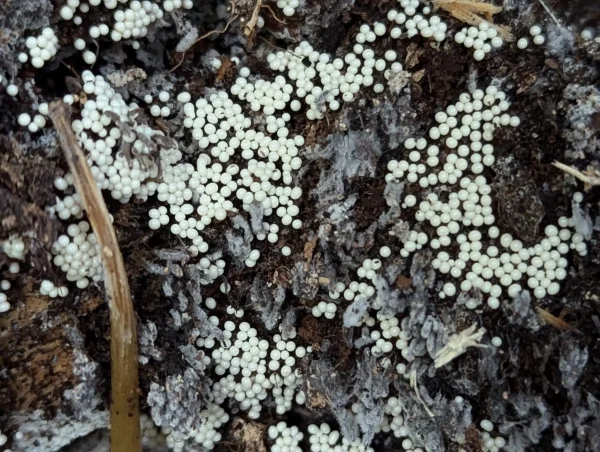
Strumpshaw Fen woodland – 6th October 2024
The maturing honey-yellow sporangia are developing over what looks like creamy white plasmodium. But is this the plasmodium of the honey-yellow sporangia or is it a plasmodium from a different species?
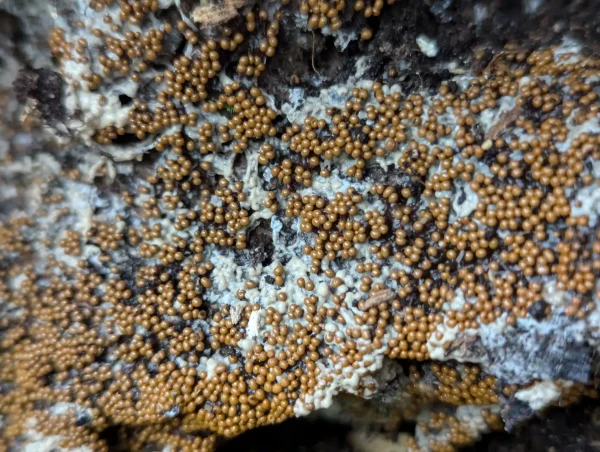
Strumpshaw Fen woodland – 6th October 2024
To the left of these maturing honey-yellow sporangia are more probable Stemonitopsis typhina. To the lower right of the main bunch of S. typhina is a cream layer of what looks mouldy slime mould sporangia some of which appear to be parasitised by a Stilbella fungus. Note the six pale yellow sporangia lower centre.
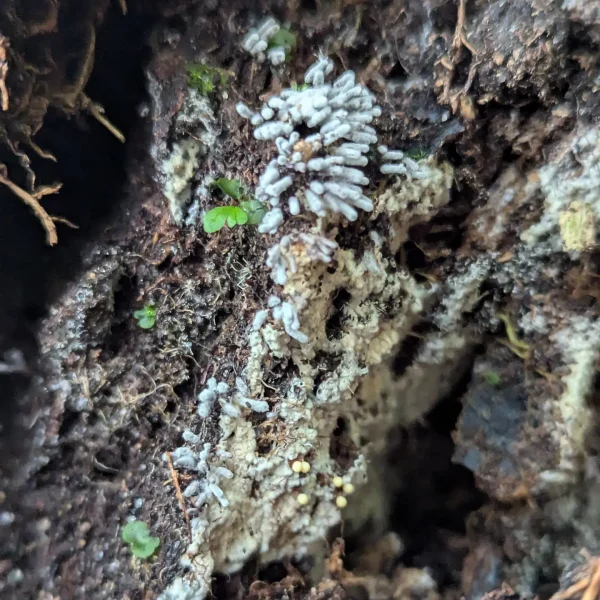
Strumpshaw Fen woodland – 6th October 2024
A couple of weeks later, the white young sporangia on the right had matured, while the maturing honey-yellow sporangia and plasmodium on the left had undergone a fascinating transformation.
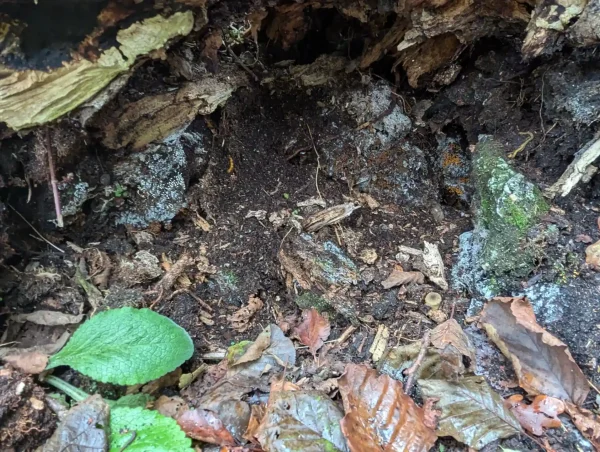
Strumpshaw Fen woodland – 20th October 2024
Adjacent the right group three new groups of curry-yellow sporangia had formed.
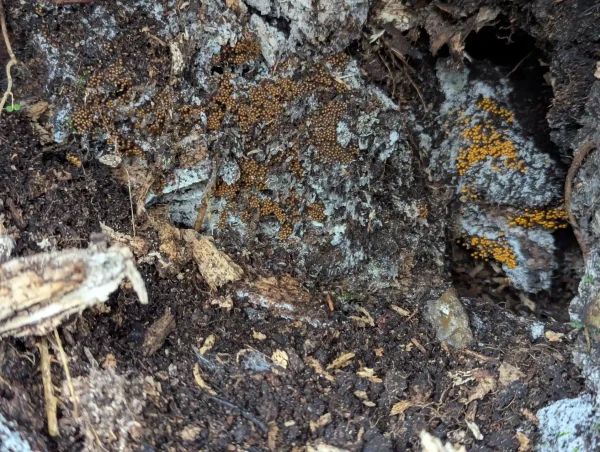
Strumpshaw Fen woodland – 20th October 2024
Close up of the adjacent curry-yellow sporangia.
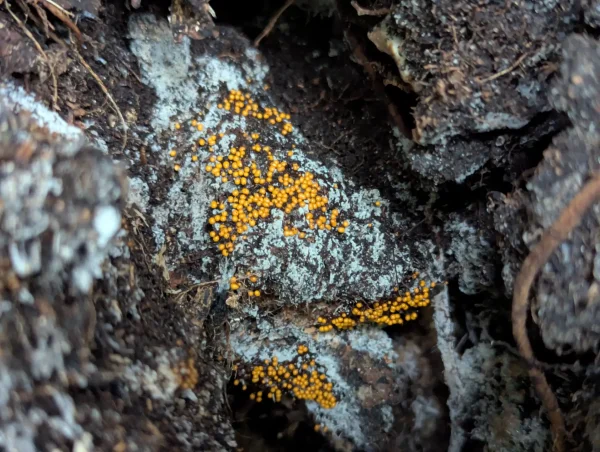
Strumpshaw Fen woodland – 20th October 2024
In the fascinating left group most of the sporangia from a couple of weeks ago had become parasitised by Stilbella, with a smattering of darker mature sporangia also present. However, there were also numerous younger sporangia — white, curry-yellow and honey-yellow, likely originating from the plasmodium that we observed a couple of weeks earlier.
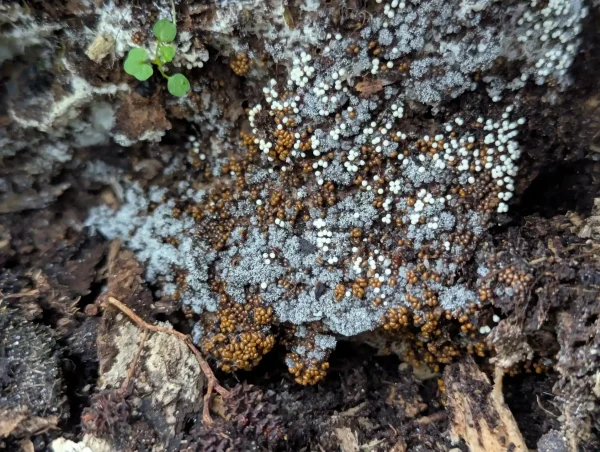
Strumpshaw Fen woodland – 20th October 2024
Strumpshaw Fen is a nature reserve managed by the RSPB adjacent the River Yare, east of Norwich in Norfolk
RSPB Strumpshaw Fen webpage RSPB Strumpshaw Fen Wikipedia entry